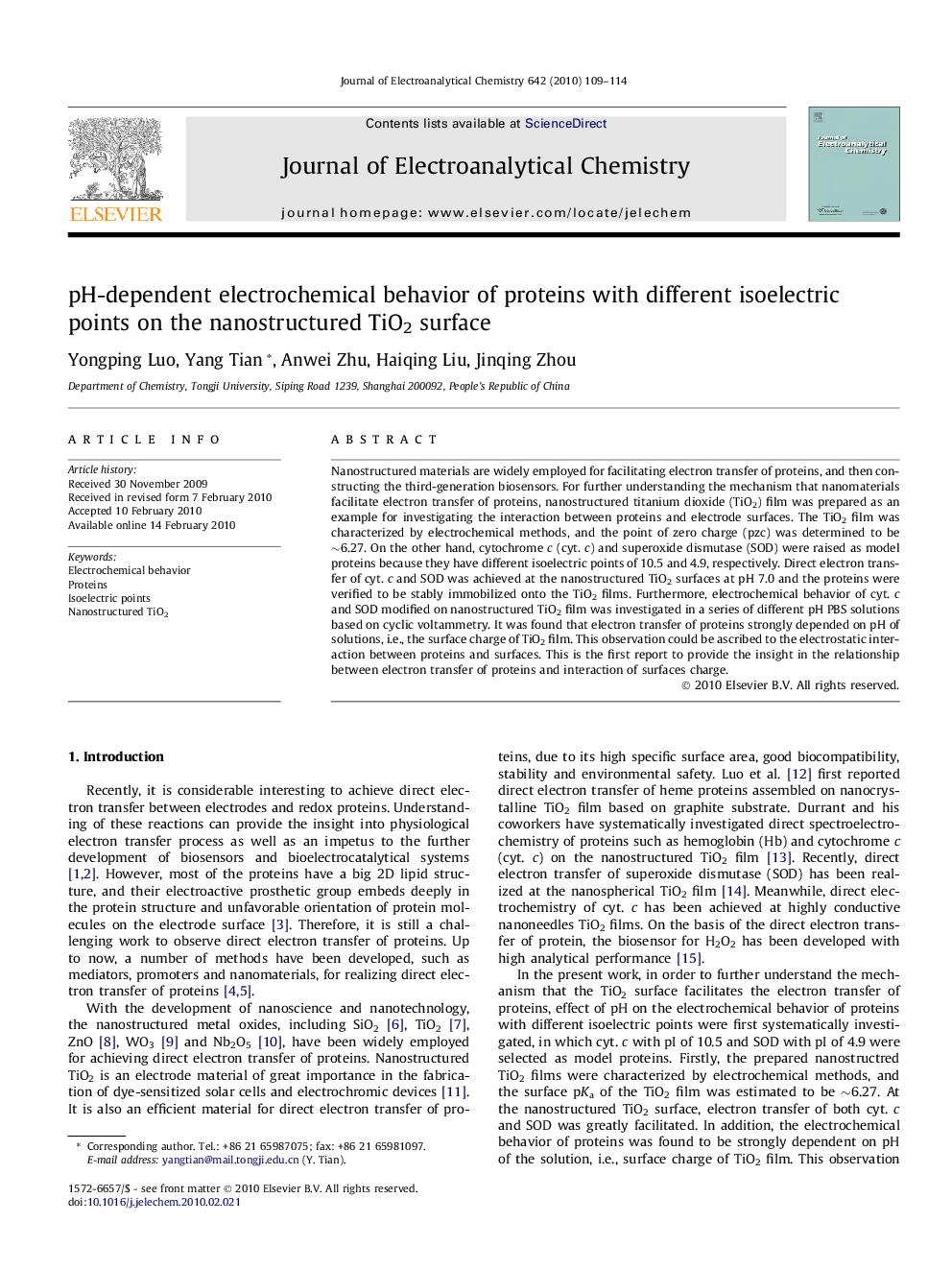| Article ID | Journal | Published Year | Pages | File Type |
|---|---|---|---|---|
| 219958 | Journal of Electroanalytical Chemistry | 2010 | 6 Pages |
Nanostructured materials are widely employed for facilitating electron transfer of proteins, and then constructing the third-generation biosensors. For further understanding the mechanism that nanomaterials facilitate electron transfer of proteins, nanostructured titanium dioxide (TiO2) film was prepared as an example for investigating the interaction between proteins and electrode surfaces. The TiO2 film was characterized by electrochemical methods, and the point of zero charge (pzc) was determined to be ∼6.27. On the other hand, cytochrome c (cyt. c) and superoxide dismutase (SOD) were raised as model proteins because they have different isoelectric points of 10.5 and 4.9, respectively. Direct electron transfer of cyt. c and SOD was achieved at the nanostructured TiO2 surfaces at pH 7.0 and the proteins were verified to be stably immobilized onto the TiO2 films. Furthermore, electrochemical behavior of cyt. c and SOD modified on nanostructured TiO2 film was investigated in a series of different pH PBS solutions based on cyclic voltammetry. It was found that electron transfer of proteins strongly depended on pH of solutions, i.e., the surface charge of TiO2 film. This observation could be ascribed to the electrostatic interaction between proteins and surfaces. This is the first report to provide the insight in the relationship between electron transfer of proteins and interaction of surfaces charge.
